Mice can be detected by sounds, droppings, gnaw marks, and urine odours. Yellow-necked mice are not shy, Often, when a human observer remains quiet and still the mice will emerge. Even though the Yellow-necked mouse feed on plants, real damage in their natural habitats is low. They can damage seedlings or young trees and thus cause reductions in reforestation. In their natural habitat they are regarded as beneficial species. More trouble occurs inside of human buildings.
In winter, Yellow-necked mice invade human housings. In warmer countries they also come in summer to human buildings to find shelter from heat.
As other rodents, Yellow-necked mice destroy food and feed by direct consumption as well as by contamination with saliva, urine, droppings and hair.
Additional, damage is produced by gnawing materials like paper, cardboard, insulation material, packaging, textiles, cables, pipes and wood, be it for opening food containers, gaining nesting material, making slip throughs wider or simply to grind of the incisor teeth.
Yellow-necked mice can be harmful to health. They harbour pathogens and parasites and carry them into human housings. Yellow-necked mice bear fleas, ticks, mites, and tapeworms. They transmit tick-borne encephalitis, Toxoplasmosis and gut viruses. In recent studies, the Dobrava Virus, that causes a severe type of Hanta disease was found in Yellow-necked mice. Transmission of pathogens occurs by contact with faeces, urine, saliva, blood or hair of the rodents.

Most common evidence for mouse activity is the droppings. Even a small mouse infestation can produce literally thousands of droppings in a short period of time. An adult mouse typically produces 50 to 75 droppings per day. Yellow necked mouse poop is usually dark-coloured, 5 – 7 mm in length. The droppings look almost like house mouse poop.

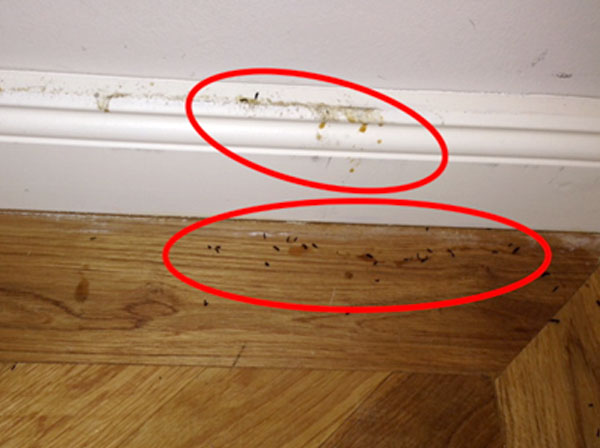

Yellow necked mice love to gnaw on various material. The gnaw marks and shredded materials are an additional evidence for the presence of mice. According the witdh of the teeth marks mice can be distinguished from rats. A mouse tooth is 0,5mm, a rat’s tooth is 2-3mm wide.
Besides chewing wires, mice gnaw on plastic items, wood, corners of cereal boxes and bags. Additionally, they shred paper, cardboard and textiles to gain nesting material.
Mouse damage holes are typically small, clean-cut holes about 1-2cm in diameter.



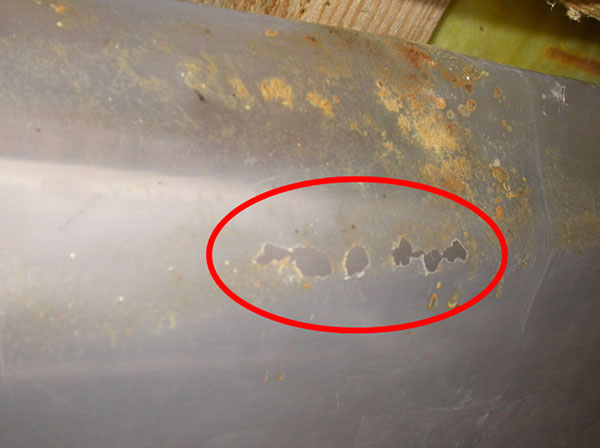
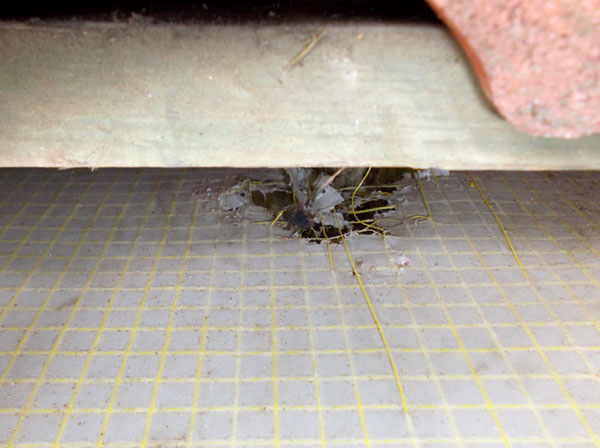







When mice are active, they make noise by gnawing or by running around in empty spaces in ceilings or walls. Because of their nocturnal activity, these sounds can be especially annoying to the human inhabitants.
Mice do continuously lose urine as they walk about. The smell helps them to orientate themselves in the dark. With substantial or long-lasting infestation, a strong smell will be detected. Cat and dog owners may see their pets excitedly sniffing, probing and scratching places, where mice have been.
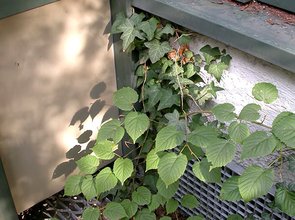


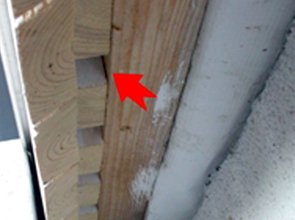

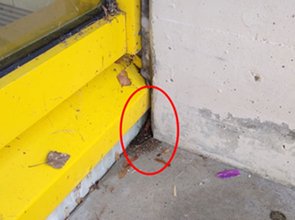
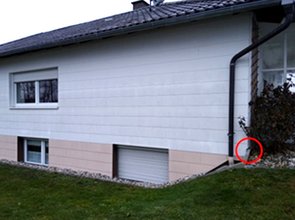
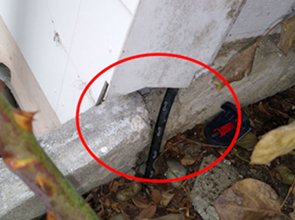

Rodent population will increase in conditions that allow easy access to abundant food and good protective shelter. These should be avoided.
The best time to act against mice is in autumn, when crops have been harvested and the cold, wet weather sets in. The pests leave their summer quarters and look for dry and warm shelter in and on buildings. It is best to catch or drive the rodents away before they become ensconced in buildings.
It is always interesting to find out how the mice came into the building. Mice need an opening of only 6mm diameter to gain entry so there are often many access points aroundthe perimeter of a building. Mice penetrate mainly through open or poorly closing doors and gates, through basement windows, lighting shafts, air intake openings, pipe ducts, cable ducts, cooling and ventilation systems, outdoor lights, transformer stations, switch boxes and other apertures in outer walls. If possible, access points should be sealed to prevent future infestations. SWISSINNO Rodent Stop Steel Wool is a quick and easy fix to plug wall outlets, holes and cracks.

Wood mice are excellent climbers. Planted facades, wood cladding and insulation offer ideal climbing aids.
Eliminate nesting possibilities to discourage mice from colonising the site. Get rid of piles of wood stacked against house walls, and of bulky rubbish on the site, and of dense ground-covering vegetation to make the area unattractive for nesting.
Remove all food sources and avoid excessive bird feeding. Store foodstuffs, pet food and seeds in rodent-proof containers and not in bags or boxes.

Ultrasonic Rodent Repellents are an effective method of scaring mice away and preventing them from entering buildings. High-pitched frequency sound waves emit a non-repetitive pattern to prevent rodents from habituating to the sound.
It is important to note that ultrasonic frequencies do not travel through walls, so at least one repellermust be placed in each room.
Ultrasonic repellers are not completely effective on their own. For maximum control they should be incorporated into an integrated pest management strategy comprising mechanical traps with food deprivation, sanitation and the closure of access routes.
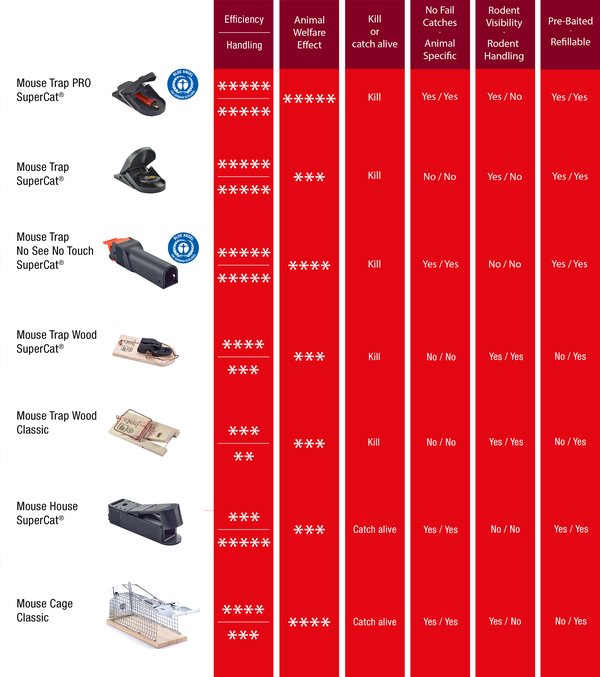
Mousetraps are an effective method of non-toxic and humane mouse control. There are 3 types of mouse traps commonly used for rodent control: Snap Traps, Catch Alive Traps, and Electronic Traps.
The following table gives an overview of the different SWISSINNO mousetraps:
A SWISSINNO mousetrap provides a quick and easy solution to a rodent control problem and it can be used many times over. A big advantage of using a mousetrap is that it retains the animal’s carcass so that the ‘trapper’ can dispose of it safely. Death by poison is never instantaneous so the animal may leave the scene and die out of sight in an inaccessible place like behind the skirting boards or under the floor boards where it will decompose emitting noxious odours and attracting flies, maggots and other insects into the home.
Yellow necked mice can get 3 times bigger than house mice. Especially in Northern regions, huge specimen occur and overwhelm regular mouse traps. In this case consider using rat traps instead.
Mouse trapping: How to go about it:





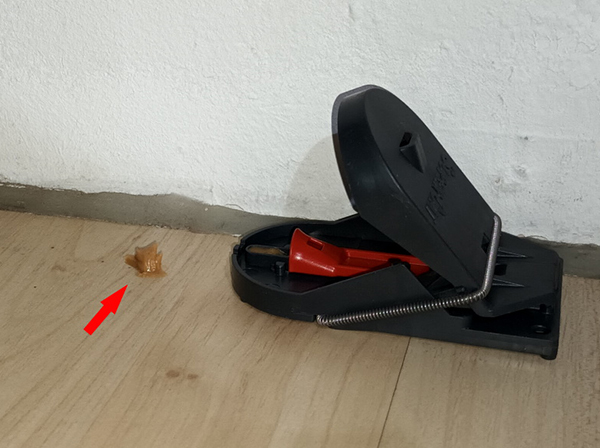
It is better to fight mice with traps. SWISSINNO advises against the use of poison bait for several reasons: